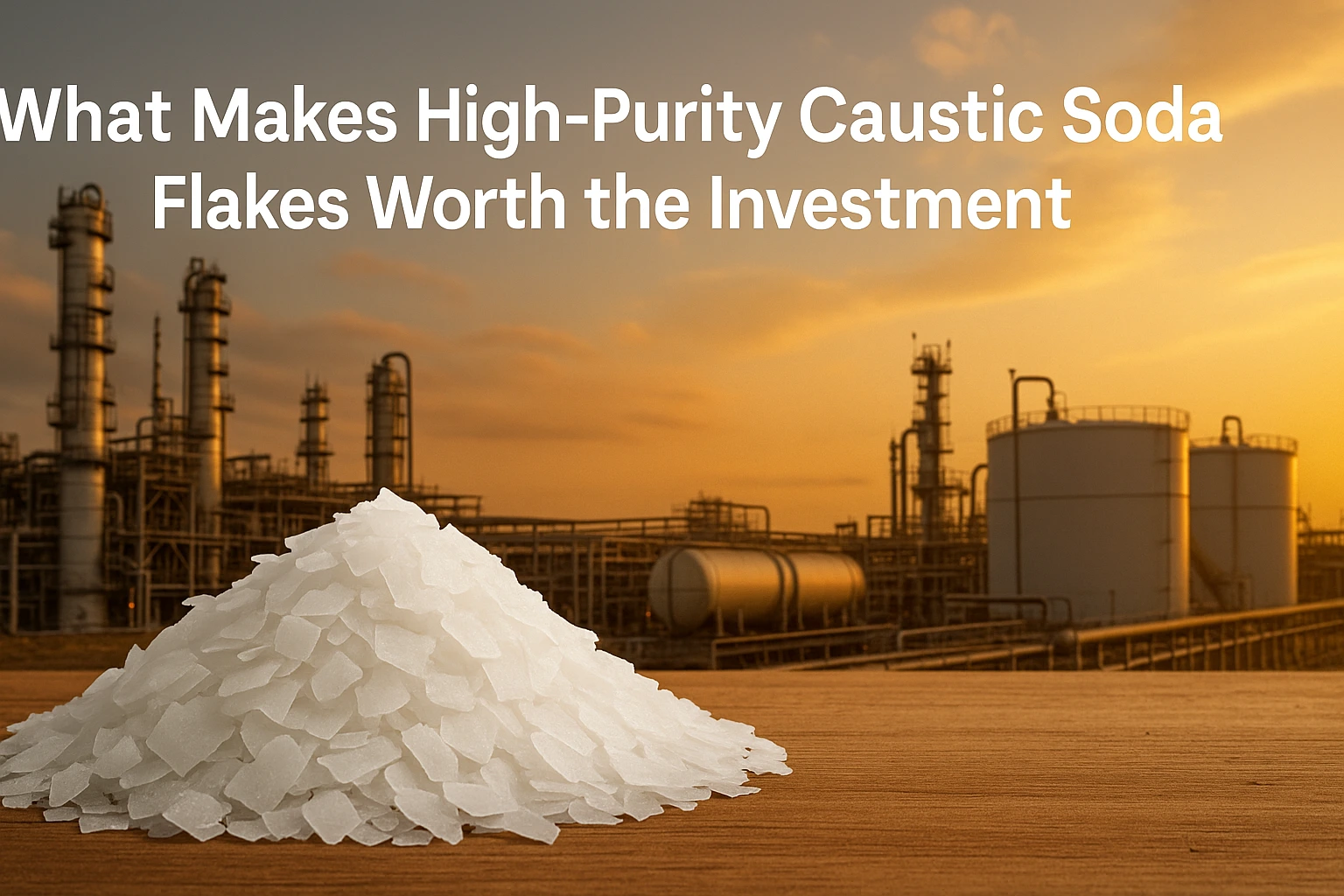What Makes High-Purity Caustic Soda Flakes Worth the Investment

Table of Content
-
Introduction: Purity Is Profit—Why It Matters More Than Ever
-
From Food to Semiconductors: Where Clean NaOH Makes a Difference
-
Premium Drivers: Cost, Compliance, and Performance
-
Supplier Selection, Packaging & Traceability
-
Conclusion: High-Purity Flakes for High-Value Futures
1. Introduction: Purity Is Profit—Why It Matters More Than Ever
High-purity caustic soda flakes (typically 98–99.5% NaOH) are more than a commodity: they’re an investment in process reliability, safety, and product yield. As advanced industries—from food processing to electronics and pharma—tighten specification requirements and regulatory scrutiny, the benefits of higher-purity grades now outweigh the upfront premium. Lower-grade NaOH risks contaminating food batches, disrupting semiconductor etching, or causing costly downtime for chemical manufacturing.
2. From Food to Semiconductors: Where Clean NaOH Makes a Difference
-
Food & Pharma: Only flakes with >99% NaOH and minimal iron, chlorides, and heavy metals meet international E511 (food additive) or pharmacopoeia standards. This reduces product recalls, regulatory penalties, and consumer risk.
-
Electronics & Solar: Advanced applications—wafer cleaning, silicon processing, LCD/OLED manufacture—demand ultra-low metal impurities. Even ppm-level contaminants affect yield, etch rates, and device reliability.
-
Specialty Chemicals & High-Value Polymers: Purity impacts reaction control, pigment/brilliant color in dyes, and polymer quality, especially in integrated chlor-alkali downstream operations.
Investing in high-grade flakes means fewer filtration steps, higher efficiency reactor uptime, and lower overall operating costs thanks to less contamination.
3. Premium Drivers: Cost, Compliance, and Performance
Why the higher price?
-
Cost of Purification: Achieving 98–99.5% NaOH purity involves advanced membrane cell electrolysis, multi-stage dewatering, and contaminant removal—expensive but necessary for high-stakes clients.
-
Packaging & Stability: Premium flakes arrive in vacuum-sealed, moisture-resistant drums or bags (25kg), minimizing hygroscopicity and shipping losses.
-
Certifications & Documentation: Suppliers provide batch COA, ISO, and hazard compliance—critical for regulated buyer audits, especially in the EU, US, and Japan.
Such investments translate to lasting partnerships, fewer complaints, and long-term contracts at a premium price differential (often $50–$120/ton more than standard technical grade).
4. Supplier Selection, Packaging & Traceability
Not all high-purity is equal. The best suppliers:
-
Specialize in >98–99.5% products certified for food, pharma, and electronics, often including E511, FCC, and GMP audits.
-
Use sealed, labeled packaging; transparent batch codes; and digital QA for global tracking.
-
Offer technical support on handling, storage, and form (flakes, beads, pearls) to suit end-user needs.
Choosing partners for traceability and regional compliance ensures consistent supply and minimal regulatory headaches.
5. Conclusion: High-Purity Flakes for High-Value Futures
What costs more up front saves exponentially in product quality, yield, and compliance downstream. For any manufacturer at the cutting edge—be it in semiconductors, pharma, or food—premium caustic soda flakes are not just worth the investment, they’re an operational safeguard and a market differentiator in 2025.

Leave a Comment